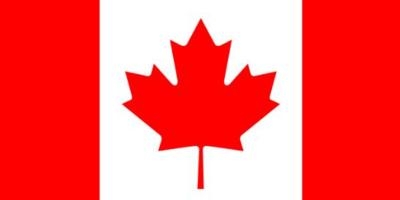Of Reaping and Sewing
Notwithstanding the school’s excellent reputation and proud and protracted history, the Edmonton Flying Club, in 2023, is struggling to pair students with instructors.

New students, in fact, can expect to spend approximately nine-months on a wait-list prior to starting Private Pilot training.
The problem, though easily comprehended, is solved with great difficulty; Certified Flight Instructors (CFIs) have grown exceedingly scarce.
Government and media outlets in Canada, the U.S., and Europe ascribe the prevailing paucity of CFIs primarily to COVID layoffs. The truth, as ever, resists simplicity, and in the prevailing instance, speaks to the perils of poor planning and complacency.
Throughout the 20th and well-into the 21st Centuries, civilian flight instruction was looked upon as the lowliest of flying jobs—the bottom rung of a long and complex career ladder up which aspiring pilots sought to move with utmost alacrity.
As anyone who worked as a CFI between 1980 and 2019 will readily attest, the profession has historically been defined by long-hours, high-risk, low-prestige, and even lower pay. Across the antecedent span of years, airline hiring fell stagnant as throngs of newly-discharged military pilots inundated the civilian pilot job market and civilian pilot applicants were marginalized en masse. In 1993, the statement “I’m going to be a well-paid, highly-respected professional pilot”—as uttered by a civilian—was tantamount to declaring one’s aspiration to play professional football, win an Oscar, or open for Led Zeppelin.
For young CFIs, arriving at the top of a mountainous aggregation of cash and effort poured into flight-training and discovering only poverty and stagnation at its summit was a soul-crushing business. Worse yet was going on to log two-thousand-hours of PIC/dual-given, investing the entirety of one’s meager pay into CFII, Multi-Engine, MEI, and ATP tickets, securing and successfully completing an interview and sim-ride with a commuter airline, and being offered a $1,200 monthly salary to take up residence in the right seat of a Dash-8 200. While acclimation to poverty inured most CFIs to pitiful pay, the notion of occupying the right seat of a glorified King Air until a cadre of 45-year-old captains reached retirement age oftentimes proved a deal-breaker.
In time, as more and more young pilots lived the aforementioned nightmare, both the flight-instructing and regional airline pilot professions gained unfavorable reputations as post-modern boulevards of broken dreams. Poverty and sharing a PDX crash-pad with five fellow junior pilots could be endured. Stagnation however, and chronic uncertainty occasioned by the absence of a clearly-defined and dependable career pathway proved beyond the endurance of persons possessed of the intelligence, passion, and drive by which competent aviators are defined.
Steadily, and in increasing numbers, the clever and capable employed their cleverness to discern the flying profession’s abysmal return on investment and plied their capability to the pursuit of more promising careers.
Comes now 2023 and a scarcity of CFIs at once acute and inevitable.
Back in Spruce Grove, Alberta, Edmonton Flying Club student David Hine stated: "There's lots of people wanting to fly and lots of planes, but not enough instructors to get through everyone right now."
Pre-COVID, Transport Canada issued some 1,100 Private Pilot certificates annually. In 2020, the agency issued fewer than five-hundred such certificates. In 2021, the number dipped below three-hundred. In 2022, across the whole of Canada, only 238 pilot certificates of any kind were issued.
Staffing shortfalls, alas, aren’t unique to remote Edmonton Flying Clubs. Canadian regional air-carrier Northwestern Air formerly ran a flight school, yet despite offering annual salaries of $100,000, failed to attract a single qualified CFI applicant.
Northwestern Air proprietor and operations manager Brian Harrold remarked: "I've got airplanes that I've had parked for months because I don't have anybody to fly them.”
The dearth of line pilots resultant of the dearth of flight instructors has forced Northwestern Air to cut flights by approximately 35-percent.
"It's just not an aviation problem, there's a shortage of workers everywhere," Mr. Harrold asserted.

Alberta's Ministry of Advanced Education has promised $11-million in aviation support over the next three years. A portion of the monies will be allocated to the creation of a new bursary for pilot training.
Additionally, Alberta’s government has committed some $73-million to the bolstering of the province’s aviation and tourism industries.
Despite the provincial government’s investment in future initiatives, McGill University lecturer and aviation management expert John Gradek insists Canadian regional air-carriers are in desperate need of immediate support.
"The industry segment that's being hit the hardest is small regional carriers [and] Northern Canadian traffic and what I would call the entry-level domain for pilots because the airlines are consuming that resource very quickly," Gradek set forth.
Gradek suggested extant pilot shortages will worsen, and expects smaller communities throughout Canada’s northern provinces and territories to see the summary suspension of aviation services.
Founded in 1927 and located on Spruce Grove, Alberta, Canada’s Parkland Airport (CPL6), the Edmonton Flying Club/Edmonton Flight College is a hybrid flying club/aeronautical-focused educational institution operating a comprehensive fleet of general aviation aircraft and providing flight-training at levels ranging from recreational pilots to job-ready, commercially certificated, multi-engine-instrument-rated commercial pilots.
 ANN's Daily Aero-Term (04.28.24): Airport Marking Aids
ANN's Daily Aero-Term (04.28.24): Airport Marking Aids Aero-News: Quote of the Day (04.28.24)
Aero-News: Quote of the Day (04.28.24) ANN's Daily Aero-Linx (04.28.24)
ANN's Daily Aero-Linx (04.28.24) Aero-News: Quote of the Day (04.29.24)
Aero-News: Quote of the Day (04.29.24) ANN's Daily Aero-Linx (04.29.24)
ANN's Daily Aero-Linx (04.29.24)




